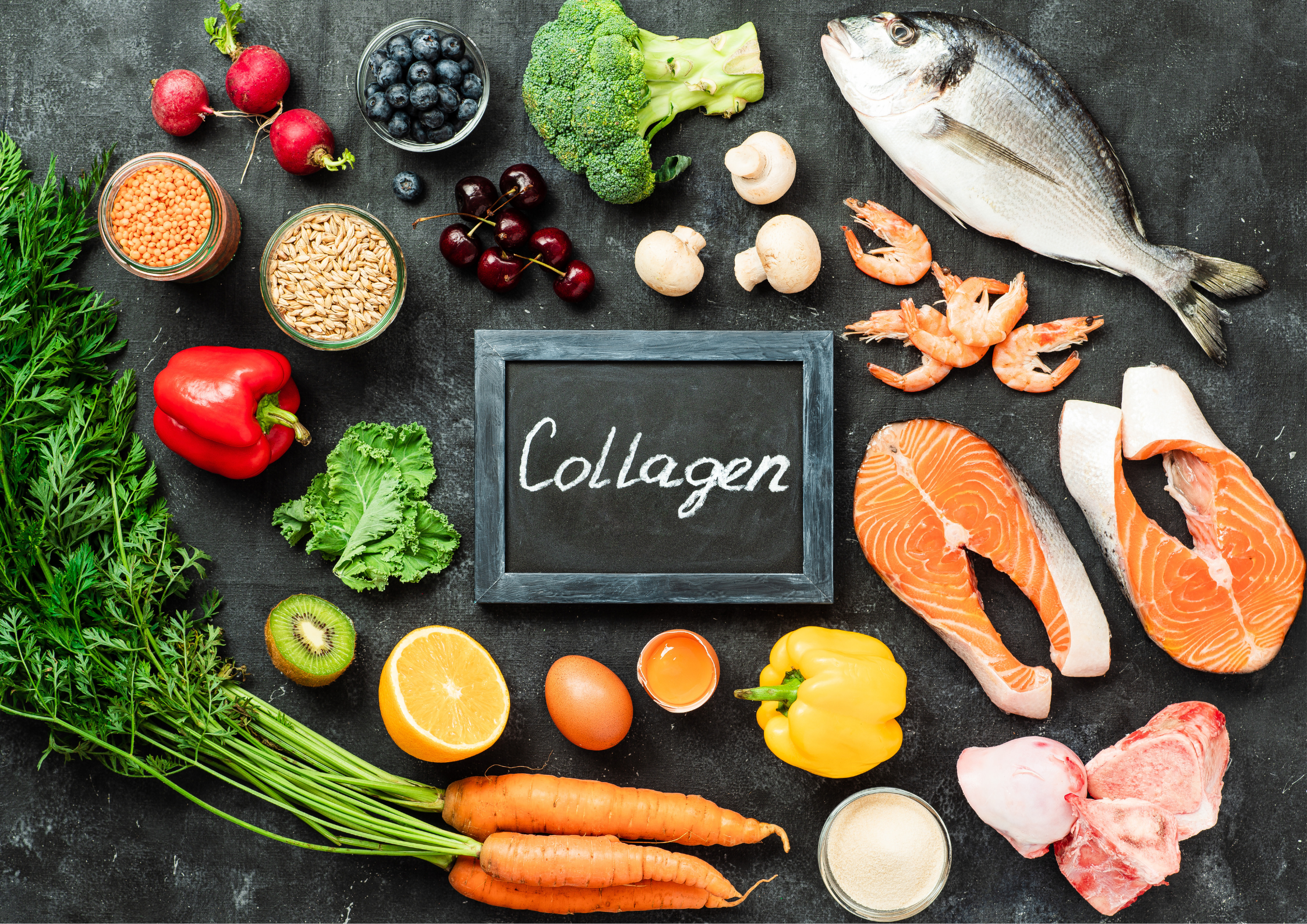When you hear the word collagen, you might think of glowing skin or plump cheeks.
But underneath the beauty buzz lies something far more foundational—especially for women dealing with prolapse, postpartum recovery, or pelvic floor strain.
Let’s break it down: collagen isn’t just about looks.
It’s the scaffolding of your body, the internal mesh that holds everything from your joints to your bladder in place.
And for your pelvic floor?
It might just be the unsung hero.

What Is Collagen and Why Should the Pelvic Floor Care?
Collagen is the most abundant protein in your body.
Think of it as the "duct tape" that binds your muscles, skin, and connective tissue together.
In the pelvic region, it plays a key role in supporting the bladder, uterus, and rectum through connective tissues like fascia and ligaments.
According to Dr. Brianne Grogan, a women's health physical therapist,
“Pelvic organ prolapse often stems from both muscular weakness and connective tissue laxity. If collagen is compromised, no amount of Kegels will fully resolve that drop or bulge sensation.”
(Source: https://www.vibrantpelvichealth.com/femfusionfitness)

The Collagen-Pelvic Connection: What Science Tells Us
Scientific research supports the collagen link.
A 2020 study published in BioMed Research International found that women with pelvic organ prolapse had significantly lower levels of Type I and Type III collagen in their pelvic connective tissue.
These types of collagen are essential for tissue strength and elasticity.
When they break down (due to age, childbirth, genetics, or menopause), tissues lose their "bounce-back" ability, leading to sagging, discomfort, and organ descent.
Another study in the International Urogynecology Journal also observed altered collagen ratios in women with stress urinary incontinence and prolapse, suggesting that quality of collagen matters just as much as quantity.
 So… Can You Rebuild Collagen?
So… Can You Rebuild Collagen?
Short answer: Yes, to some extent.
Collagen production naturally slows with age, but lifestyle shifts and muscle support can help reinforce pelvic structures.

This is where training the muscles that work alongside your connective tissue becomes essential.
Devices like the PelviTone™ can gently activate and strengthen your pelvic floor using low-level electrical pulses, something that’s especially helpful for those who struggle to “feel” Kegels or engage the right muscles.
Dr. Kelly Casperson, a urologist and women’s health advocate, explains:
“You can’t tighten fascia with exercise, but you can support it. Collagen, hydration, and muscular coordination all work together to stabilize the pelvic floor.”

Don’t Forget Vitamin C (And Why It Matters)
Here’s the kicker: your body can’t make collagen without vitamin C.
It’s the co-pilot in your collagen-building mission.
Without it, even the best lifestyle changes are like trying to build a house without nails.
Collagen is the brick. Vitamin C is the mortar. Without both, nothing sticks.
Collagen and Prolapse: What Women Are Saying
While more research is needed specifically on collagen’s effects in prolapse treatment, anecdotal reports are encouraging.
One woman on a pelvic floor support forum shared:
“After two months of consistent core work and posture corrections, I noticed less heaviness and fewer flare-ups, especially after standing or walking for long hours.”
Another shared on Reddit:
“Combining pelvic floor therapy with structured training made a big difference. The tissues felt less ‘fragile,’ and I was able to stand longer without discomfort.”

And for some women, layering their healing tools makes a difference.
While exercise builds muscle tone, others find relief pairing it with gentle herbal patches designed to calm urgency and support bladder tone.
Bladder Control Patches offer this kind of topical relief using a botanical blend, used by some to complement internal and muscular recovery routines.
Tips for Supporting Collagen Naturally
If you're not ready to jump into a routine with devices or supplements, you can still give your body a collagen and muscle boost with these daily habits:
✅ Eat collagen-rich foods: Bone broth, chicken skin, eggs, fish with skin
✅ Load up on vitamin C: Oranges, strawberries, kiwi, bell peppers
✅ Stay hydrated: Dehydration leads to tissue brittleness
✅ Avoid sugar and smoking: Both degrade collagen
✅ Gentle pelvic movement & posture: Yoga, deep core breathing, sitting well-aligned
Posture also plays a big role in pelvic pressure.
When you sit in a way that compresses or tilts your pelvis, it increases downward strain, especially if connective tissues are already weakened.

A posture support cushion can gently realign your spine and reduce that heaviness many women feel when sitting for long periods.

PelviTone™ Posture Support Cushion is one such aid designed for pelvic alignment and daily comfort.
Bottom Line
Muscles get all the glory, but collagen is the quiet backbone (literally and figuratively) of pelvic health.
Whether you’re managing prolapse, supporting recovery, or just aiming to feel stronger from the inside out, supporting your connective tissue and strengthening the pelvic floor is a smart, science-backed place to start.
As Dr. Casperson puts it:
“Pelvic health is structural health. And collagen? That’s part of the foundation.”




Share:
Standing, Sitting, Lifting: Everyday Movements That Strain Your Pelvic Floor
The Summer Struggle Is Real: Why Prolapse Feels Worse When It’s Hot